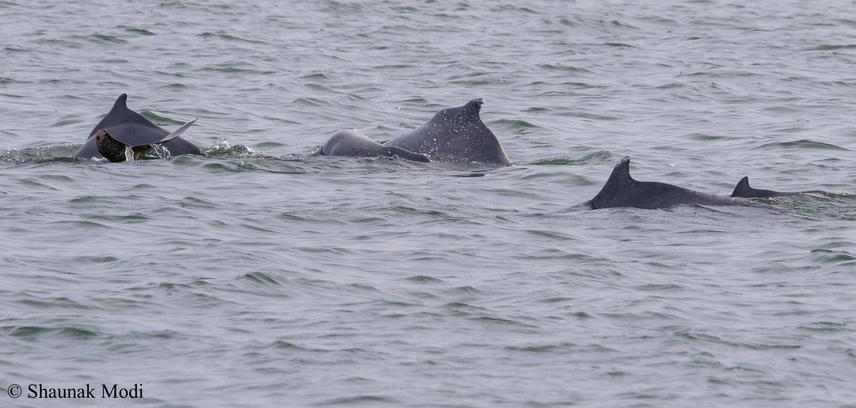Isha Bopardikar
Other projects
13 Sep 2017
Acoustic Communication in Indian Ocean Humpback Dolphins (Sousa plumbea) in a Noisy Coastal Habitat
28 Apr 2025
Assessing the Status of Coastal Cetaceans in an Important Marine Mammal Area (IMMA) off the West Coast of India
The Sindhudurg coast of India is home to a rapidly expanding commercial fisheries industry and the coastal waters are extensively fished using a wide variety of fishing gear. These waters also form an important habitat for two species of marine mammals, the Indian Ocean humpback dolphin (Sousa plumbea) and the Indo-Pacific finless porpoise (Neophocaena phocaenoides). Both species are known to be vulnerable to anthropogenic pressure and impacts from fishing activity such as accidental gear-related mortalities (bycatch) are common. These threats and the degradation of habitat are imminent and there is a need to formulate targeted conservation measures. The development of informed management strategies requires broad-scale population level data, which are currently unavailable for these species from Indian waters.
Through this study, we aim to understand spatiotemporal distribution patterns and population densities of humpback dolphins and finless porpoises along the Sindhudurg coast of Maharashtra, India using passive acoustic line transects.

The coastal waters of Sindhudurg, India, form a critical habitat for two species of cetaceans; the Indian Ocean humpback dolphin and the Indo-Pacific finless porpoise.
Of the two species, humpback dolphins are non-migratory and have fragmented populations throughout their distribution range. Increasing habitat degradation, and pressure in the form of growing resource competition (commercial fishing) and intensifying vessel traffic are potentially detrimental to local populations. Robust density estimates for humpback dolphins in Indian waters are currently unavailable to effectively gauge the population-level impact of these threats. Despite covering a wider habitat range along the Sindhudurg coast, finless porpoises are increasingly threatened by fishing pressure. Widely used fishing gear (gillnets and purse seines) in the area is known to cause incidental mortalities. Therefore it is not surprising that across India’s coastline finless porpoises are one of the most common cetacean species in by-catch (Sule et al. 2017).
However, lack of dedicated research on this species has left gaps in crucial information regarding their status and trends in abundance and distribution.
With rapid industrialization of the fisheries sector and development of coastal infrastructure, timely gathering of population level data on coastal cetaceans is crucial to formulate mitigation measures at local and regional levels.
Our study will assess population sizes of humpback dolphins and finless porpoises along the Sindhudurg coast of Maharashtra, India to inform effective conservation strategies for these species.